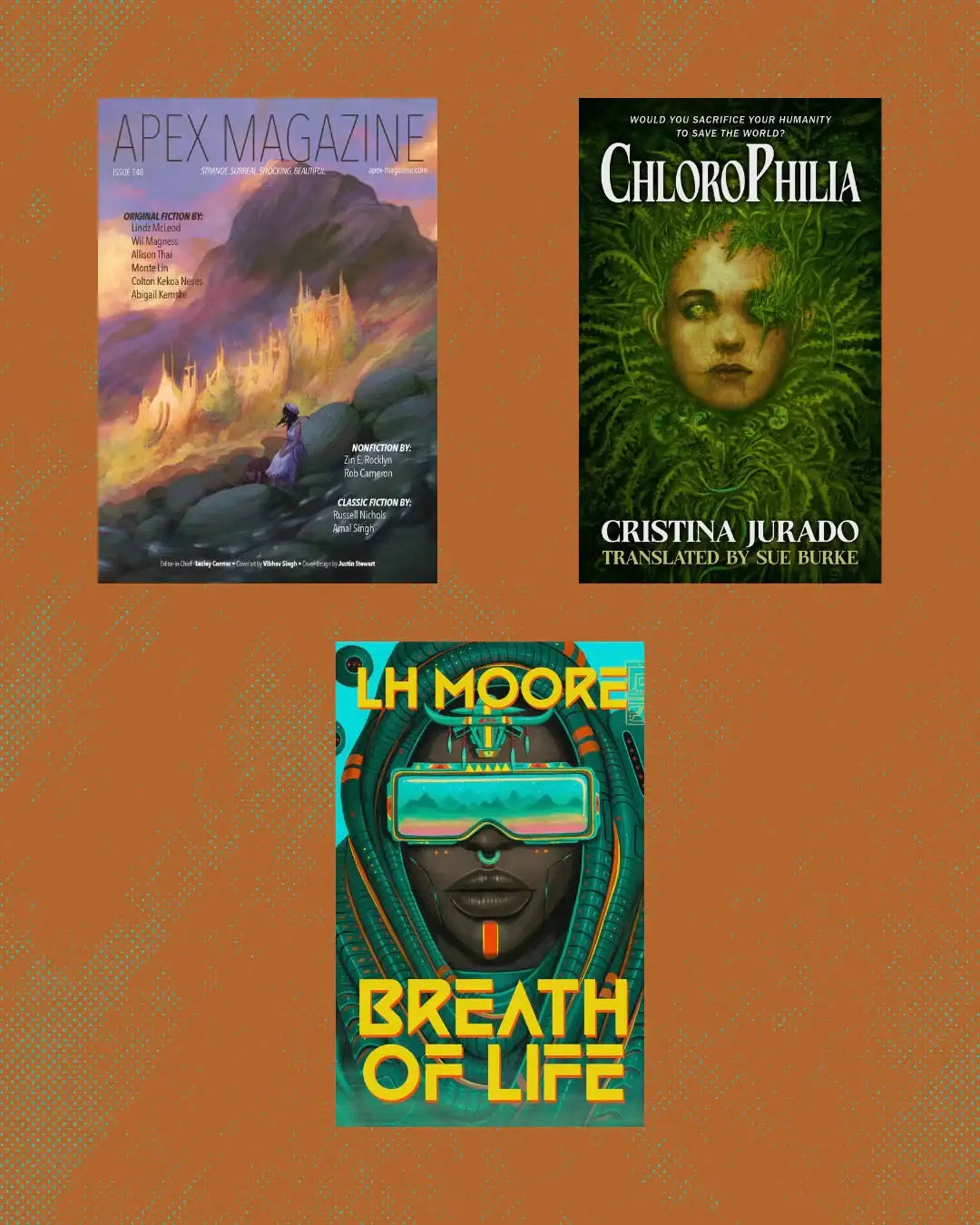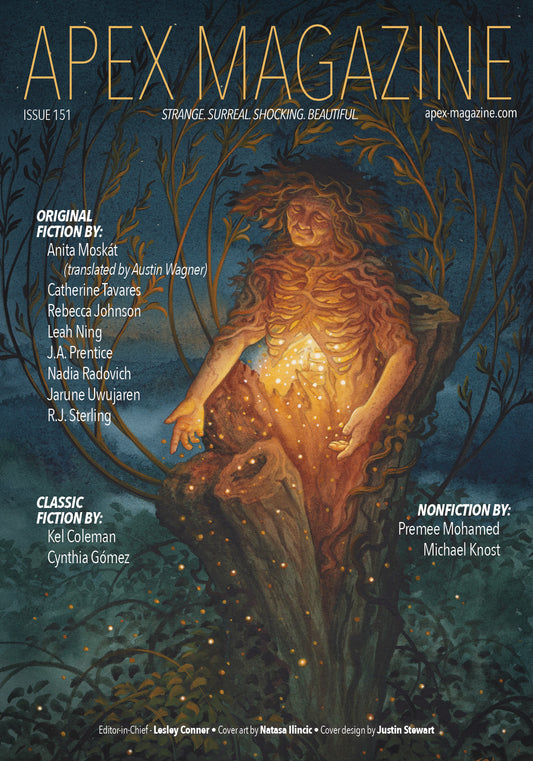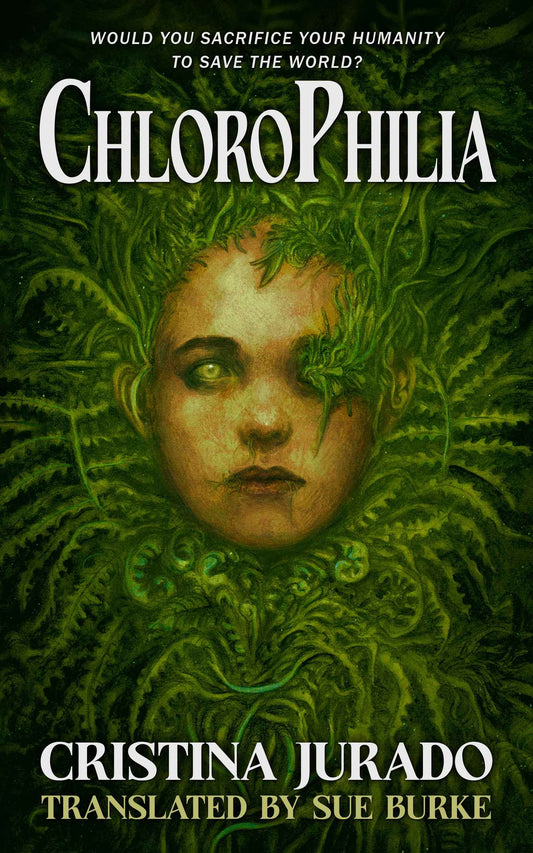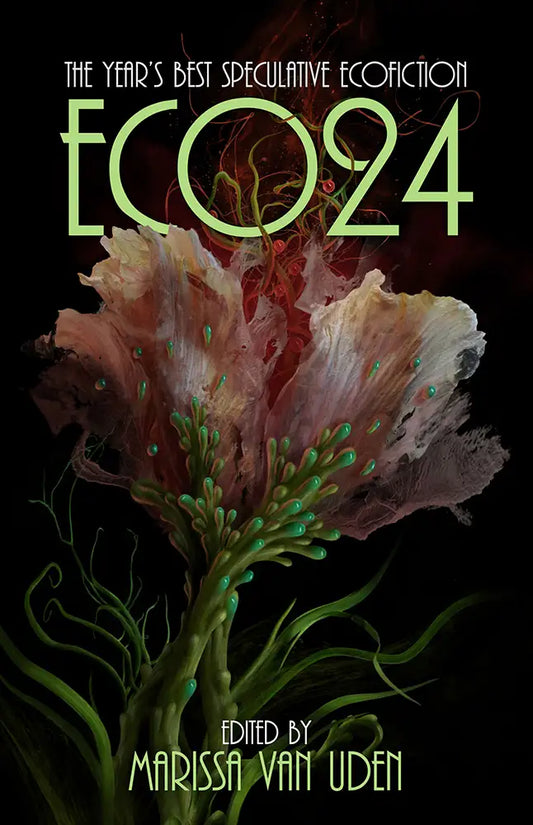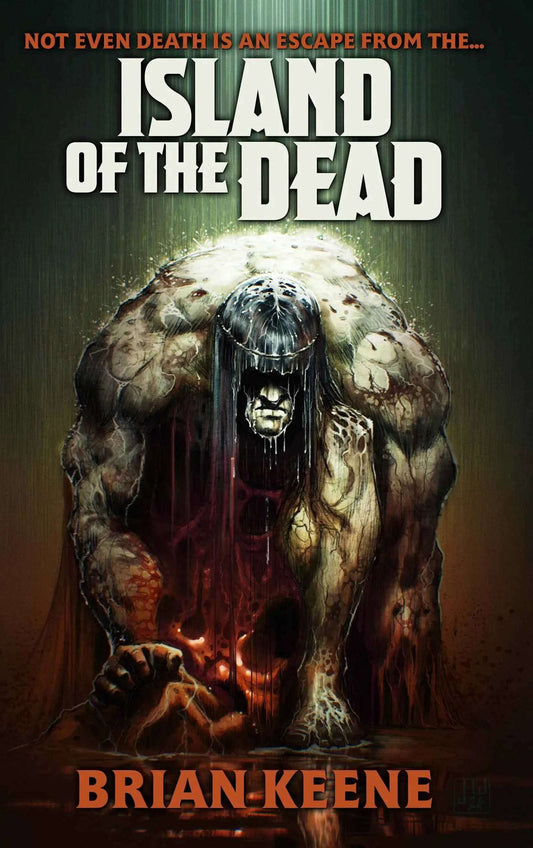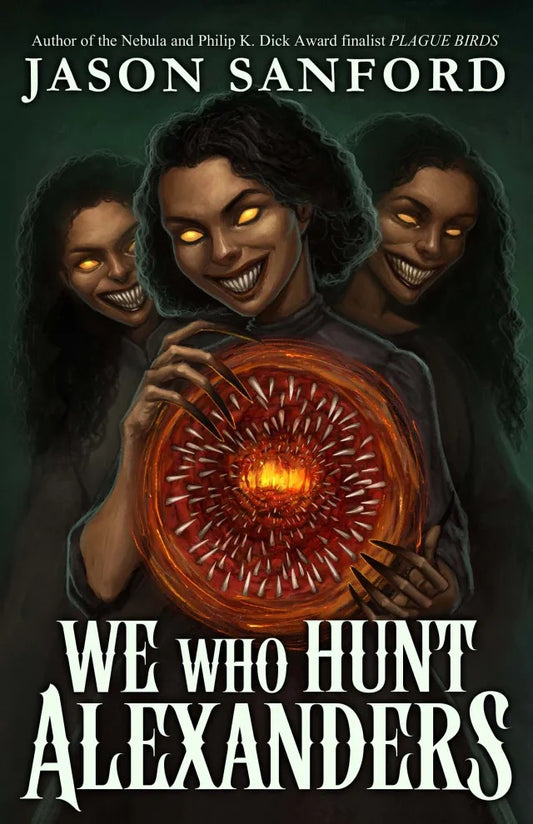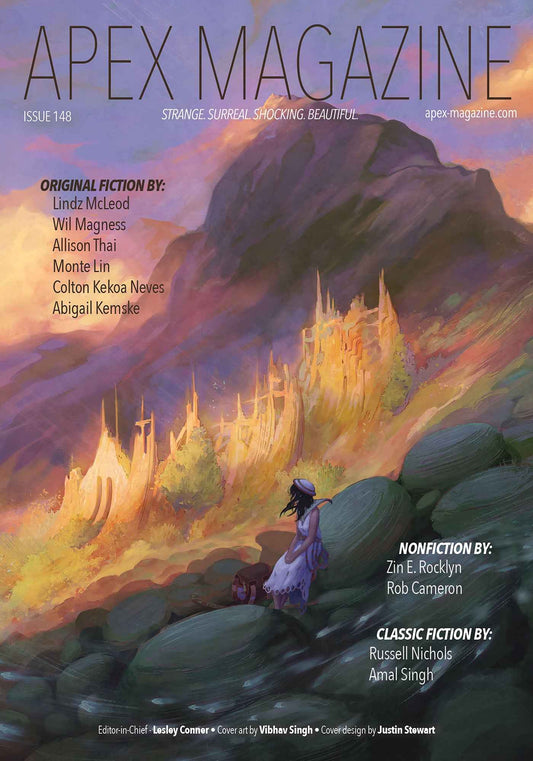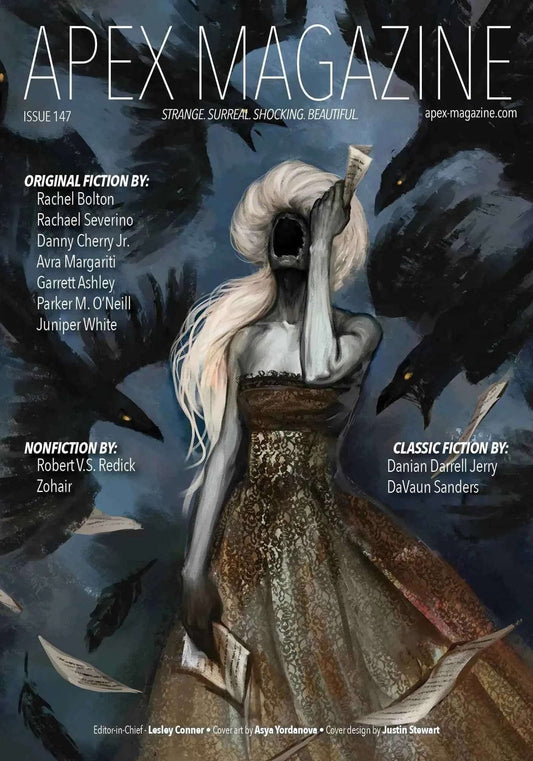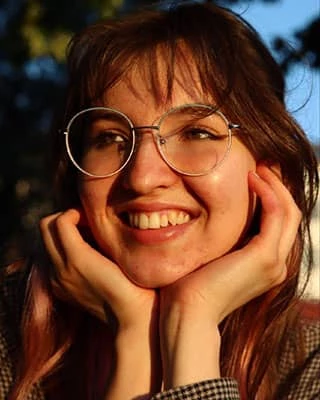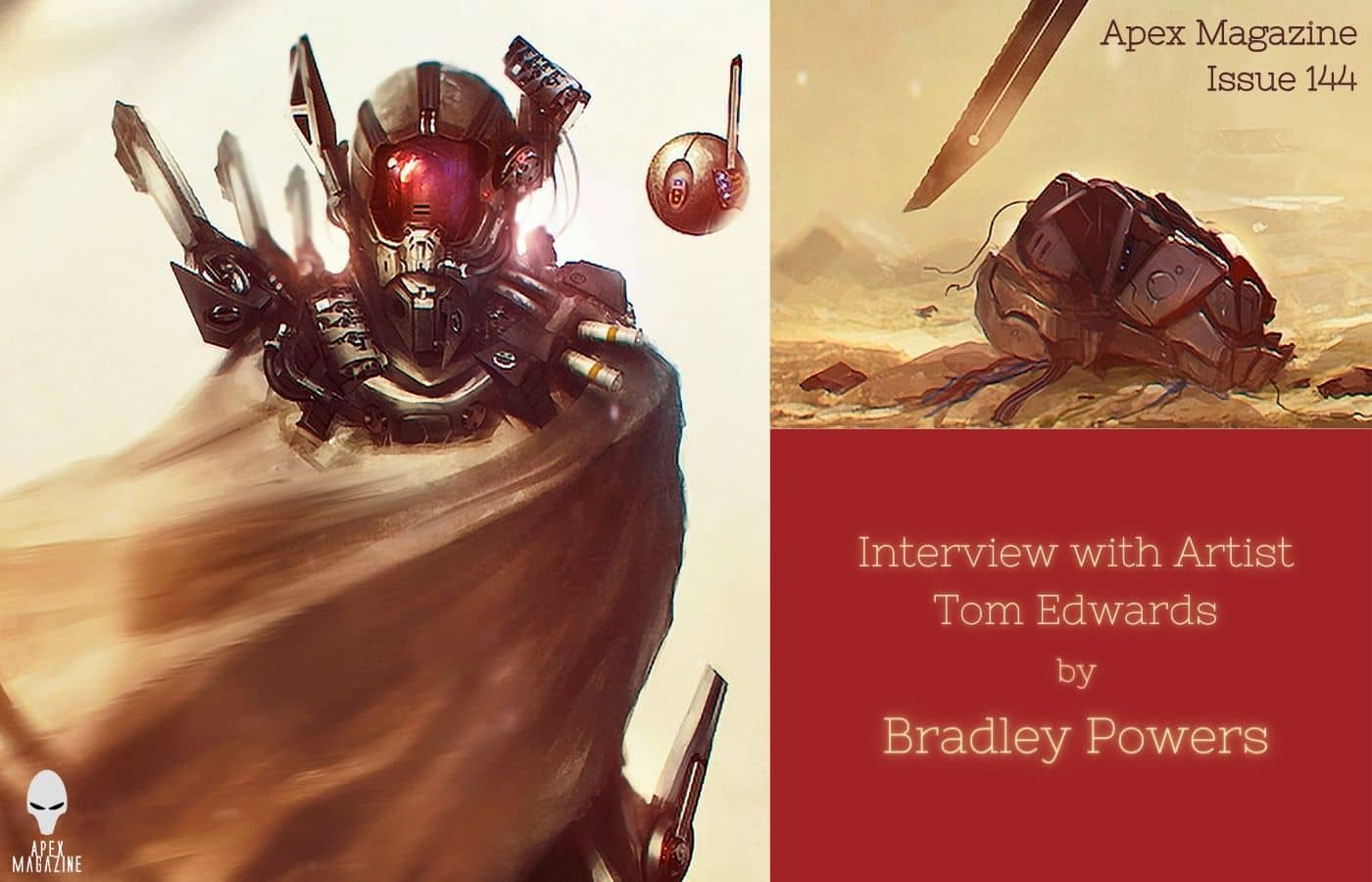
This month’s cover art was created by freelance illustrator and concept designer, Tom Edwards, who has been creating fantastical cover art since he created his business, Tom Edwards Design, in 2015. His piece on our cover, “n0-M.A.D//003 - Military Assassin Droid," is just one example of his amazing sci-fi character work.
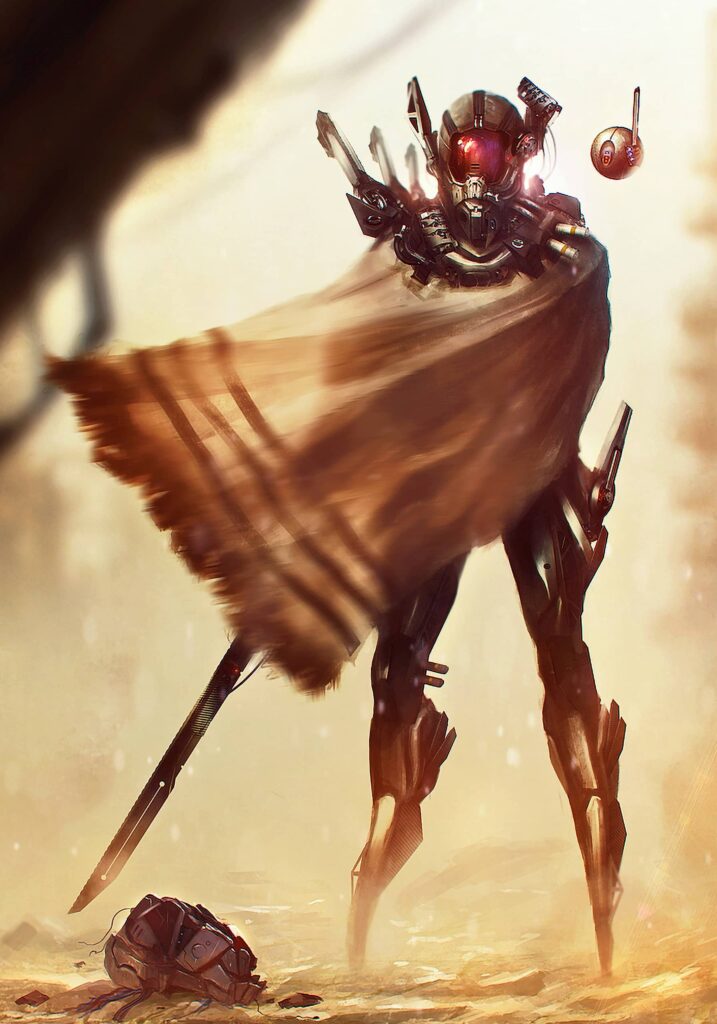
BRADLEY POWERS: Even with little comparative perspective in this piece, you have still created this character that looks large and menacing by elongating the lower legs, placing the viewer at ground level where we seem to be looking slightly up at this droid, and by showing movement that leads the eye to the weapon the droid carries. We aren’t given much context which makes this mysterious creature intriguing but also intimidating. When you are illustrating a character how do you go about giving the viewer visual information to understand the character?
TOM EDWARDS: When I work on character designs, I initially come up with a rough narrative for the piece. I wrote this short piece: The n0-M.A.D droid is an extremely adept killer. Armed with an array of weaponry, including the brand new 'HYPABLADE-V4', it can dispense quick justice to unruly robots. They are built to last and can survive in the harshest of conditions. Fitted with an updated version of the 'SYNC-personality implant chip', they are known to take on unique personalities that develop over time. Feared and respected, they make a valuable choice for any respectable security or military corporation.
With the story in place, I try and work on the main features that will help the viewer work out what could be happening. The severed droid's head on the ground and his confident stance show that he’s adept with the blade he carries. Small clues like this can help to sell the design.
BP: In 2015 you left your position at Codemasters and created your own design company, Tom Edwards Design. As an artist myself, I know that moving to freelance can be a huge and scary leap to take. How was the transition from working for a company to owning your own business?
TE: It was scary. I was in my mid-twenties at the time, so I didn’t have too many responsibilities. That made it a little easier. I was also working on book covers in my free time, so many that I was struggling to find time for anything else. After a few layoffs at the company, most of my friends had gone, and I wasn’t finding any enjoyment in my work anymore. I wanted to at least try and do my own thing, and here I am 9 years later. It was probably the best decision I’ve made in my career.
BP: This is far from the first time your work has been on a cover. In fact, it seems to be the main focus of your business. What is the process of designing a cover from the author’s concept to the final cover?
TE: I usually ask the author which events of the book they might want me to illustrate. They’ll send me some passages for the story and I start to build a picture up in my mind, almost like I’m watching a movie, pausing on the most interesting or action-packed shots.
I’ll then create several rough composition sketches to send to the author. We’ll discuss them in detail, and which part they like or may want changing. After a few rounds of this, we’ve normally settled on a chosen design for me to start detailing.
I’ll then spend time working on each part of the cover. It could be characters, ships, or an epic landscape. I ask the author for feedback after each painting session until the final cover is completed. At this stage, we’re both happy with the artwork and it can be signed off. I’ll then work on text if that’s required, and any other extras like social media banners or an audiobook conversion.
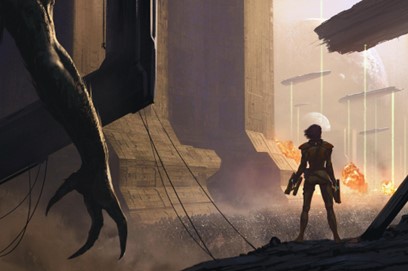
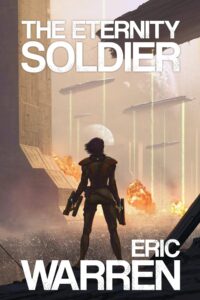
BP: Not only is your work visually so pleasing, but the story each piece tells is a work of art on its own. What kind of techniques do you use in the storytelling aspect of creating art?
TE: Visualizing the story in my head helps a lot early on. I think I have quite a good visual memory so it’s not too difficult for me to see the image in my head before I start. As I described in the droid painting, hinting at aspects of the story (like the severed droid head) can help to create an overall picture of what’s going on, without being too obvious.
I like adding small details here and there to hint at a world outside of the picture. For example, a soldier may have a badge on his armor that could hint at a wider world where different military companies exist.
I like creating landscapes or alien worlds where relics of time are still visible. Giant megastructures buried by time still show up, and that can help sell the idea of a larger world. A mixture of architecture is a good way to do this too. The old vs the new is a great way to add contrast to a piece.
BP: How did you first become interested in sci-fi and fantasy? Are there any movies or games that really sparked your passion for these genres?
TE: When I was growing up in the 90s, there were plenty of films and TV shows that I loved to watch. Jurassic Park and Star Wars were big favorites of mine, as well as a plethora of Saturday morning cartoons. I’ve always loved knights in armor, dragons, spaceships, and alien creatures.
I’d spend hours drawing characters and monsters from my imagination. My friends also shared similar interests, so we’d act out scenarios in the playground. I think when you’re young, your imagination is so much stronger and vivid compared to being an adult. I’m always striving to find that child-like passion for all things sci-fi and fantasy, and being able to paint knights and spaceships now is a dream come true.
If you told me at 8 that this would be this for a living now, I wouldn't believe you. I’m very lucky to be doing this job, and I hope I’ll be able to do it for many more years.
BP: Thank you so much, Tom, for giving us this glimpse into your process! You can find more of Tom’s work at his website and DeviantArt.
